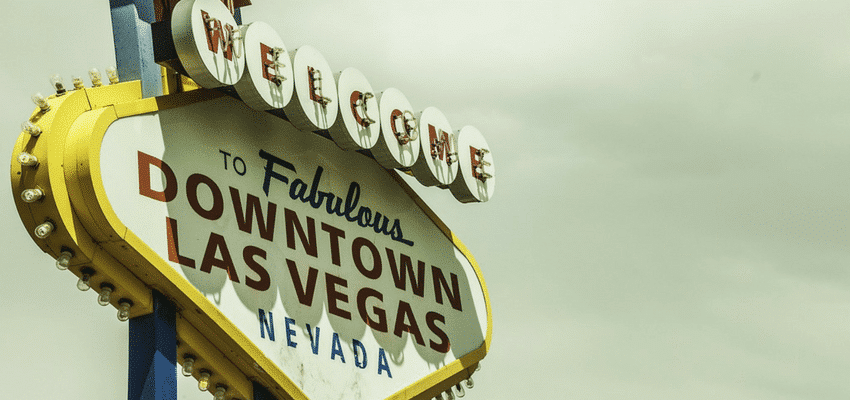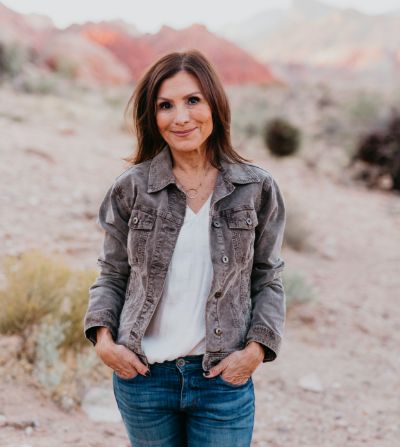How the King of Culture’s Kool-Aid Helped a City Find Its Soul
By Stephanie Forté
Las Vegas is a far more rich and complicated fabric than it’s been given credit for; even seasoned writers, blinded by the Strip’s bright lights, have missed out on or just not bothered to see our city’s depth. But that wasn’t the case with Tony Hsieh, and now our hearts have broken twice. The reporting on events leading up to Tony’s final months and days are gut-wrenching. How do we reconcile such a tragic ending? Is it enough to be grateful and rename a street, or do we simply continue carrying out a shared vision of Las Vegas?
“Exactly how much of that Tony Hsieh Kool-Aid did you drink?” It was late 2012, and I’d just signed a commercial lease on 7th Street in Downtown Las Vegas. The comment was made while celebrating at a climber get-together in Summerlin, a manicured master-planned development on the west side, and was more statement than question. I’d been running a PR agency in Las Vegas for years where I told people, including my friends, about things that shouldn’t be missed. Lately, Zappos CEO Tony Hsieh’s vision for Downtown Las Vegas or DTLV had been getting air time at the climbing gym, crag, and the Yard House.
I was super into Downtown.
My generation, GenX, were born between 1965 and 1980. Our post-Baby Boom pre-Millennial generation mistakenly branded as slackers includes people like Tony Hsieh — independent thinkers who envisioned a new kind of workplace that’s an expression of its people and values work-life balance. Settling for less was selling out to some other generation’s idea of success that glamourized workaholism and putting off meaningful life experiences until later, or never. Xers like Tony, created the technology and culture that flipped this equation. As author Jeff Gordinier wrote, “GenXers are doing the quiet work of keeping America from sucking.” And Las Vegas, too.
I’m probably not the only GenXer who landed in Las Vegas in their twenties or thirties searching for or running from something. My friends came for rock climbing and said things like, “I’m out of here in five years.” Cities like Seattle, San Francisco, and Boulder beckoned: “I’ve gotta live somewhere that’s got some soul.”
I’d first stumbled upon Downtown in 1997 when a climber guy camped next to me on BLM land near Red Rock Canyon said I’d get better gas mileage if I swapped the heavy futon bed in the back of my pickup truck where I was living for a lightweight piece of foam. Handing me the address of Galaxy Foam on E. Charleston Blvd, he said, “But dude, it’s like in a super sketchy part of Vegas.” I was a newly minted full-time rock climbing athlete, which meant unemployed, climbing, and very interested in stretching my $400 a month budget. I pulled a map from the glove box and drove east, as towering sandstone desert peaks turned into sprawling suburbs then urban industrial landscape where I made a wrong turn.

Main Street’s empty buildings with broken windows, some boarded up, felt like a forgotten part of Las Vegas, left to wilt in the desert sun while the city birthed new life nearby on Las Vegas Blvd. In the desert, underground springs create pockets of lush greenery, a stark contrast to the dry red dirt landscape. Downtown also had scattered oases, but in the Colorado mountain town where I’d recently lived, downtown was a vibrant gathering place; its soul.
Could I live somewhere that had lost its soul?
Now some 15 years later, Tony’s Downtown Project was making a pitch to take $350 million and transform us into the most community-focused large city on the planet, and that sounded cool. National news outlets wrote about it, and Tony took the stage at events like The Aspen Ideas Festival, where big thinkers share their vision. Finally, it seemed, as a 40-something year old in Las Vegas, I’d have that thing my younger self swore not having is why I’d be gone.
In 2004, Tony and Zappos landed in Henderson from San Francisco, bringing a new brand of hip to the valley. The 2009 sale of Zappos to Amazon meant a big windfall that in 2012 became a piggy bank, Downtown Project, set on revitalizing DTLV. The following year, Zappos moved its headquarters to Downtown to the old City Hall building. Things were humming.
Tony’s “Kool-Aid” rehydrated an idea about place central to what other people in Las Vegas and I imagined as part of our future. In the climbing community, I had connection, but Downtown promised more. It was a place to exchange ideas and engage with others to solve problems, learn, and stretch yourself. It’s where you could discover on the other side of your patio’s cinderblock wall was another person starved for this experience.
The more national press Tony and Downtown got, the more people began to look at Las Vegas differently. Climbing friends in Colorado finally retired jokes about a different time in Vegas when people smoked while playing slots in grocery stores. Instead, having just watched something online, they asked about “Tony’s Downtown thing.”
About the time billboards popped up declaring, “Downtown Vegas Makes You Smarter,” people throughout the valley talked about Zappos and Tony-inspired ideas. Conversations about business were energized, our language and thinking more expansive. Even my dentist talked about how to create a better workplace culture. The Learning Village held fireside chats with celebrity-type CEOs. We were invigorated to reimagine ourselves as leaders in a modern city. It was an intoxicating time.
People in Las Vegas were more than ready for a dose of hope. Living through the Great Recession meant watching homes go empty or losing your house. There were problems with squatters and tenants moving out of residential and commercial space in the middle of the night. Like many, I worked hard, forgoing extras, carefully saving, and cautiously spending. By 2012, the energy behind Downtown felt like a big exhale after years of holding your breath. We were going to be okay.

Other people had ideas about Downtown before Tony. First Friday had grown since its 2002 launch. Developer Sam Cherry had already delivered things like chic loft-style apartments and places like the Lady Silvia lounge, and its neighbor, the Amanda Harris Art Gallery. The entire city had been slowly shedding its old skin, trying on something more polished. Tony’s concept of Downtown just catapulted things to an entirely different plane. The difference was, Downtown, we weren’t just ticket holders admiring a venue — we were the venue and main event.
Tough-times showed up in DTLV, as they always do. Downtown Project’s budgets were slashed, and startups it funded failed or bailed, and the press coverage started to sour. But the revitalization of Downtown was something more, it was the lasting change that happened to people in the thick of it and a few degrees removed. Tony’s vision offered us a new starting point, and we took it and kept going. Wasn’t that the point?
I am not a Zappos or Tony insider. But I was one of the people invigorated by the idea of a transformed Downtown Las Vegas, of a city that looked like what I envisioned as a younger woman sitting under starry skies after climbing, talking about the future.
Tony talked a lot about collisions, so when I walked smack into him one night at the Smith Center, I was startled, especially when he sheepishly said, “Oh, sorry. Hi Stephanie.” I’d never had an in-depth conversation with Tony. Still, a regular climbing partner had become one of his closest friends and colleagues, so I sometimes found myself at Tony’s house, and then his DTLV apartment or in his company at Downtown Cocktail Lounge. He didn’t remember my name because I’d once said something remarkable or witty. A friend argued, “The guy’s a genius. Of course, he remembered.”
Remembering a person’s name makes them feel welcome; it’s a part of fostering community. Using a name makes someone feel seen and like they matter. It’s the first step in creating connection. And that is what’s necessary to make a solid foundation on which to build a dream the scale of Tony’s, now his legacy, that invited many to help shape our city’s future. Maybe we can start there.
